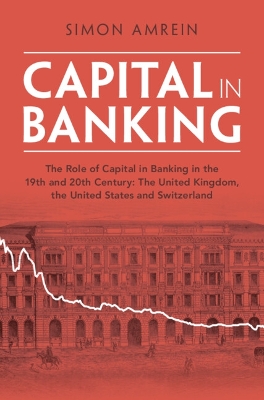Capital in Banking
 portes grátis
portes grátis
Capital in Banking
The Role of Capital in Banking in the 19th and 20th Century: The United Kingdom, the United States and Switzerland
Amrein, Simon
Cambridge University Press
12/2024
225
Dura
9781009276894
Pré-lançamento - envio 15 a 20 dias após a sua edição
Descrição não disponível.
Part I. Introduction: 1. The scope of this book; 2. The role and relevance of capital in banking; 3. Chapter outline; Part II. Capital Ratios in the Long Run: 1. Capital ratios since 1840; 2. The problems of constructing long-run time series; 3. Structural changes in balance sheets; 4. Hidden reserves; 5. Extended Shareholder Liabilities; Part III. The 19th Century: How Ideas Shape Capital Structures: 1. Early banking literature: shared roots, different trajectories; 2. England: balancing the interests of shareholders and depositors; 3. Switzerland: transparency in the absence of regulation; 4. United States: capital requirements from the very beginning; 5. Concluding remarks; Part IV. Two World Wars: Overturning Conventions: 1. Wartime dynamics of balance sheets; 2. Assets side: financing wars; 3. Liabilities side: deposits and capital issuances; 4. British banking and capital: the absence of a topic; 5. Amalgamations movement in England; 6. During and after the second world war: banking without capital; 7. Switzerland: the demise of guidelines - and the rise of rules; 8. After the first world war: back to normal; 9. The importance of formal capital requirements; 10. The United States: the birth of risk-weighted assets; 11. From deposits to assets: a new supervisory focus; 12. Categorizing assets according to risk; 13. Concluding remarks; Part V. How Crises Drive Regulation: 1. The international environment and regulatory convergence; 2. From informal to formal: the regulation and supervision of banking and capital in the United Kingdom; 3. The irrelevance of capital: 1945 to 1973; 4. The relevance of capital: the secondary banking crisis; 5. The banking acts of 1979 and 1987; 6. Regulation in Switzerland - and how it was influenced; 7. Banking legislation in the 1930s; 8. The evolution of capital regulation: 1934-1991; 9. The influence of banks on the evolution of banking regulation; 10. The United States: finding the right weight; 11. Changes in capital adequacy standards in the 1970s; 12. The Latin American debt crisis as a driver of capital standards; 13. Concluding remarks; Part VI. Epilogue: 1. Basel capital requirements and the characteristics of leverage before the 2007/2008 financial crisis; 2. The limits of capital; Bibliography.
Assunto não disponível.
Part I. Introduction: 1. The scope of this book; 2. The role and relevance of capital in banking; 3. Chapter outline; Part II. Capital Ratios in the Long Run: 1. Capital ratios since 1840; 2. The problems of constructing long-run time series; 3. Structural changes in balance sheets; 4. Hidden reserves; 5. Extended Shareholder Liabilities; Part III. The 19th Century: How Ideas Shape Capital Structures: 1. Early banking literature: shared roots, different trajectories; 2. England: balancing the interests of shareholders and depositors; 3. Switzerland: transparency in the absence of regulation; 4. United States: capital requirements from the very beginning; 5. Concluding remarks; Part IV. Two World Wars: Overturning Conventions: 1. Wartime dynamics of balance sheets; 2. Assets side: financing wars; 3. Liabilities side: deposits and capital issuances; 4. British banking and capital: the absence of a topic; 5. Amalgamations movement in England; 6. During and after the second world war: banking without capital; 7. Switzerland: the demise of guidelines - and the rise of rules; 8. After the first world war: back to normal; 9. The importance of formal capital requirements; 10. The United States: the birth of risk-weighted assets; 11. From deposits to assets: a new supervisory focus; 12. Categorizing assets according to risk; 13. Concluding remarks; Part V. How Crises Drive Regulation: 1. The international environment and regulatory convergence; 2. From informal to formal: the regulation and supervision of banking and capital in the United Kingdom; 3. The irrelevance of capital: 1945 to 1973; 4. The relevance of capital: the secondary banking crisis; 5. The banking acts of 1979 and 1987; 6. Regulation in Switzerland - and how it was influenced; 7. Banking legislation in the 1930s; 8. The evolution of capital regulation: 1934-1991; 9. The influence of banks on the evolution of banking regulation; 10. The United States: finding the right weight; 11. Changes in capital adequacy standards in the 1970s; 12. The Latin American debt crisis as a driver of capital standards; 13. Concluding remarks; Part VI. Epilogue: 1. Basel capital requirements and the characteristics of leverage before the 2007/2008 financial crisis; 2. The limits of capital; Bibliography.

